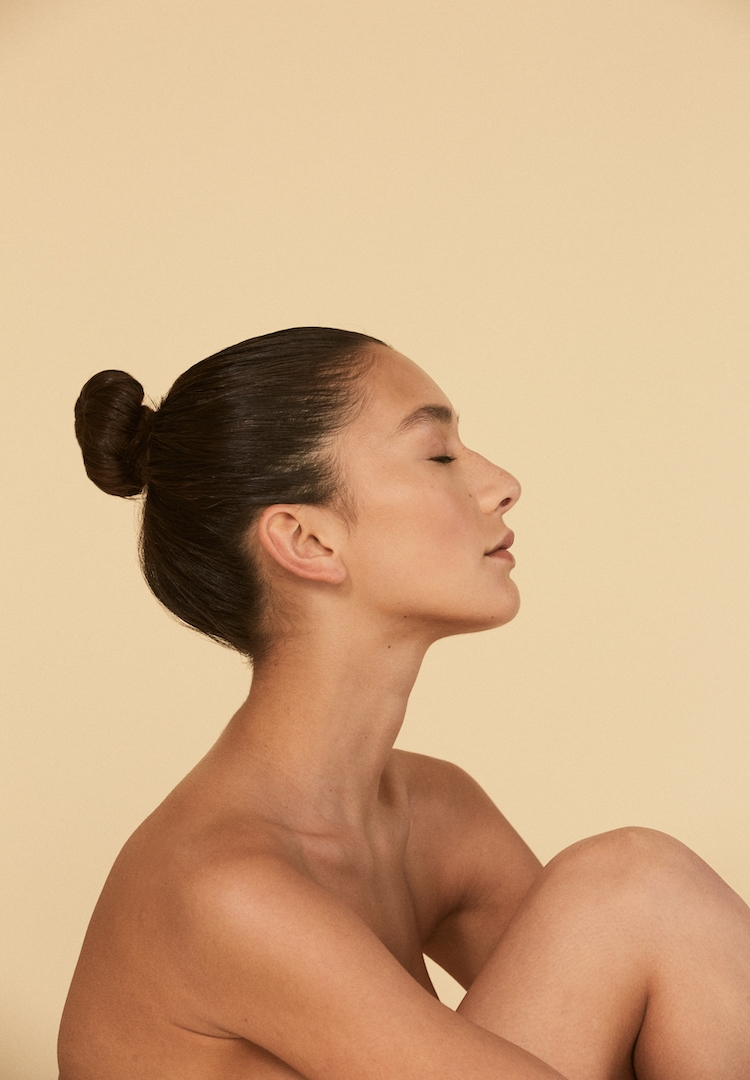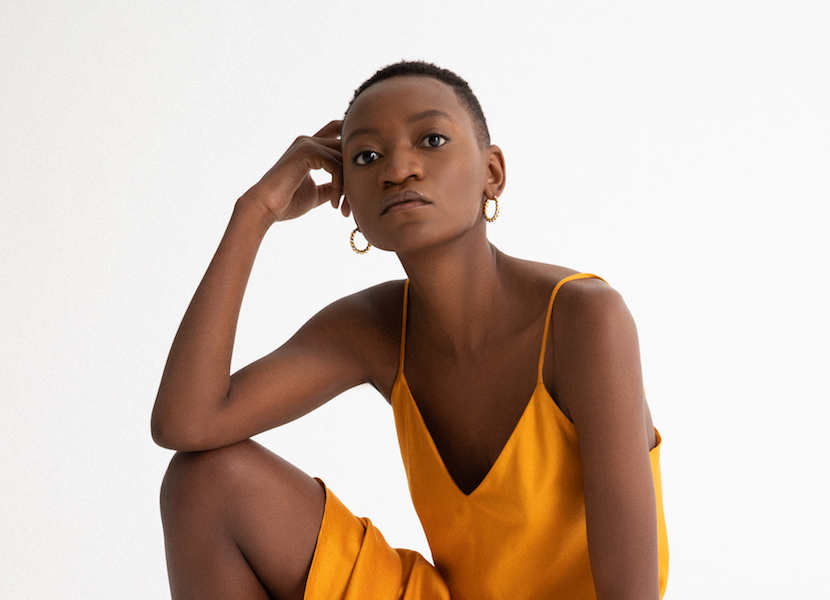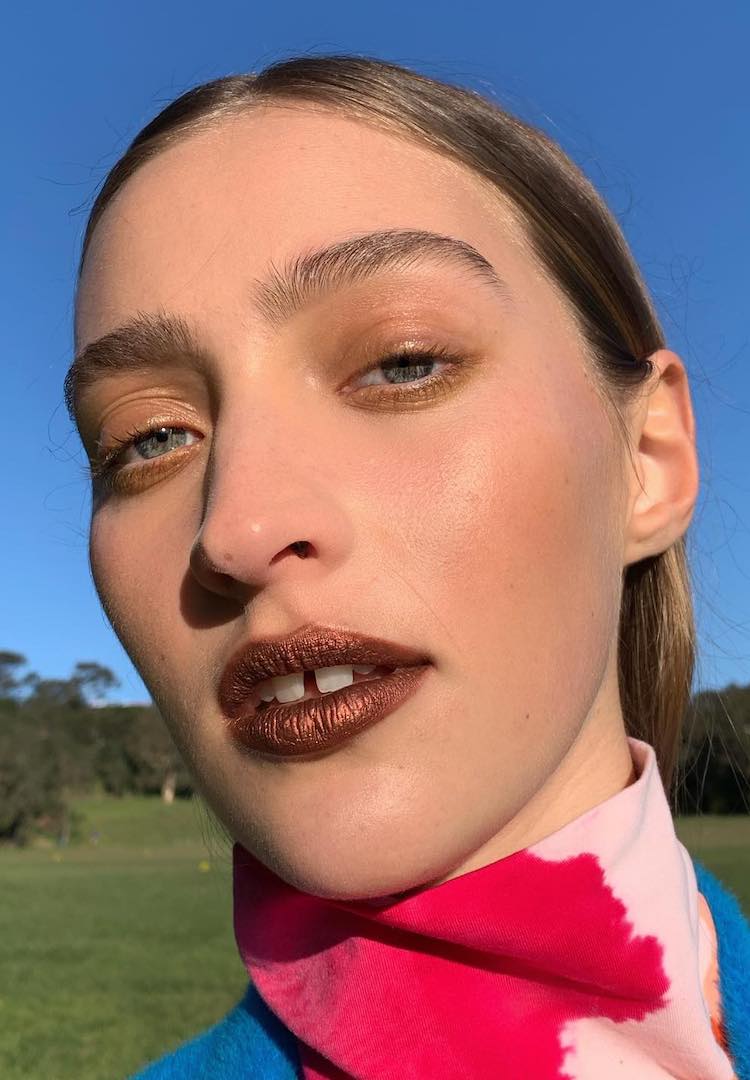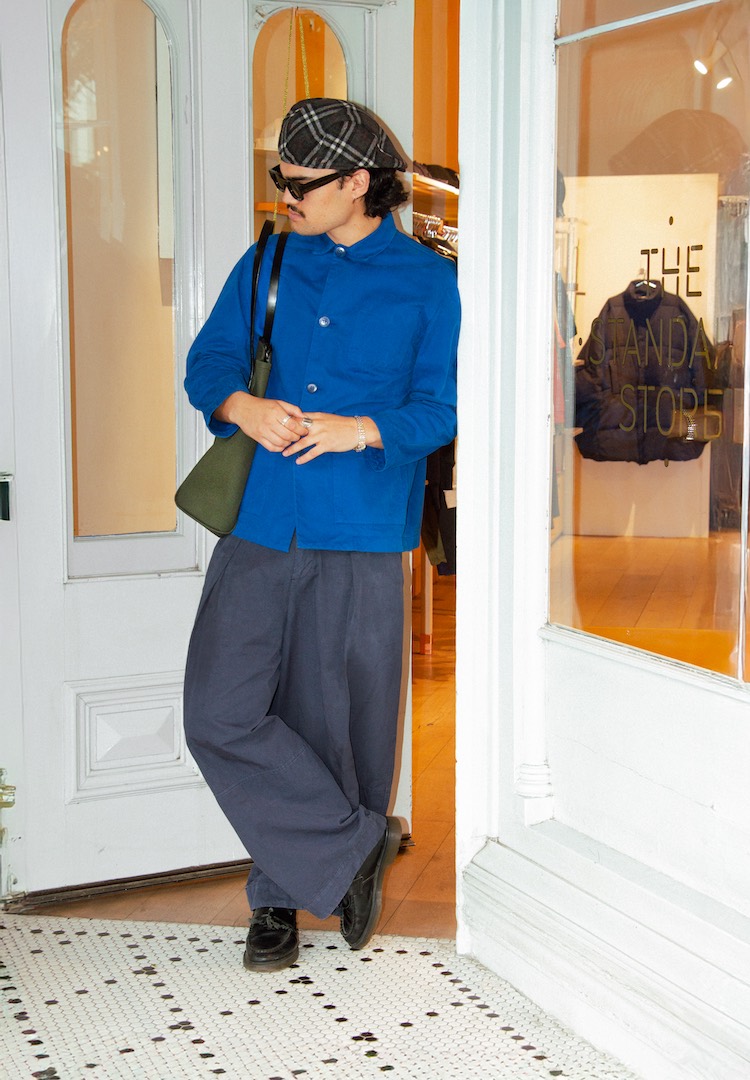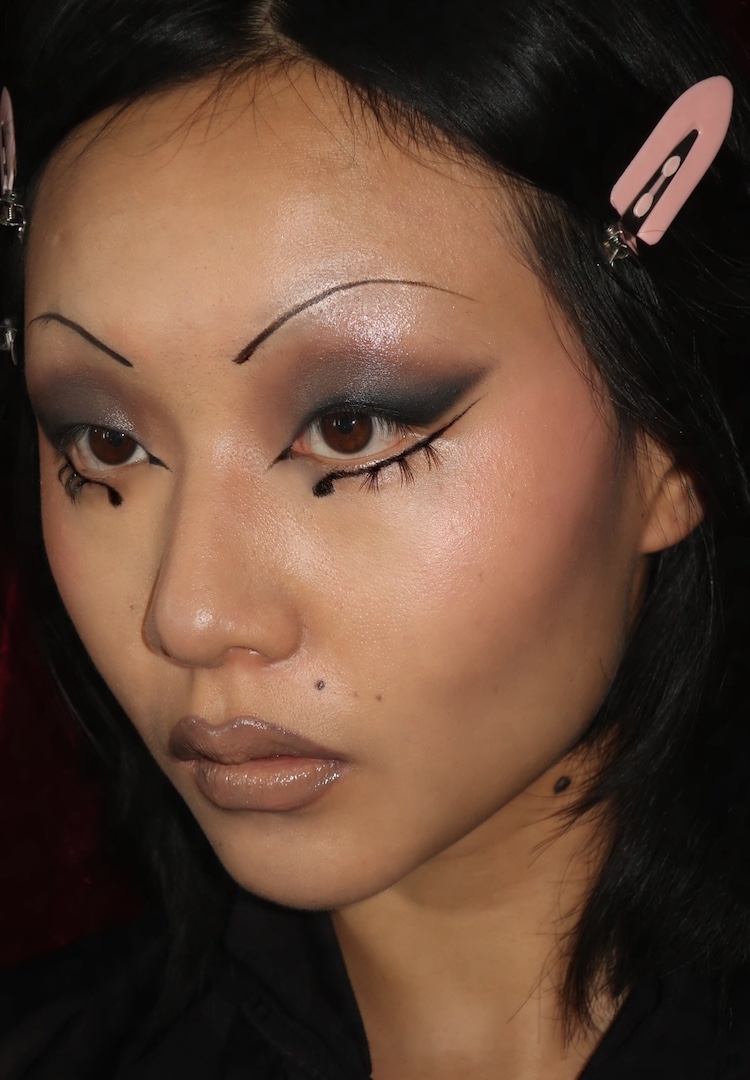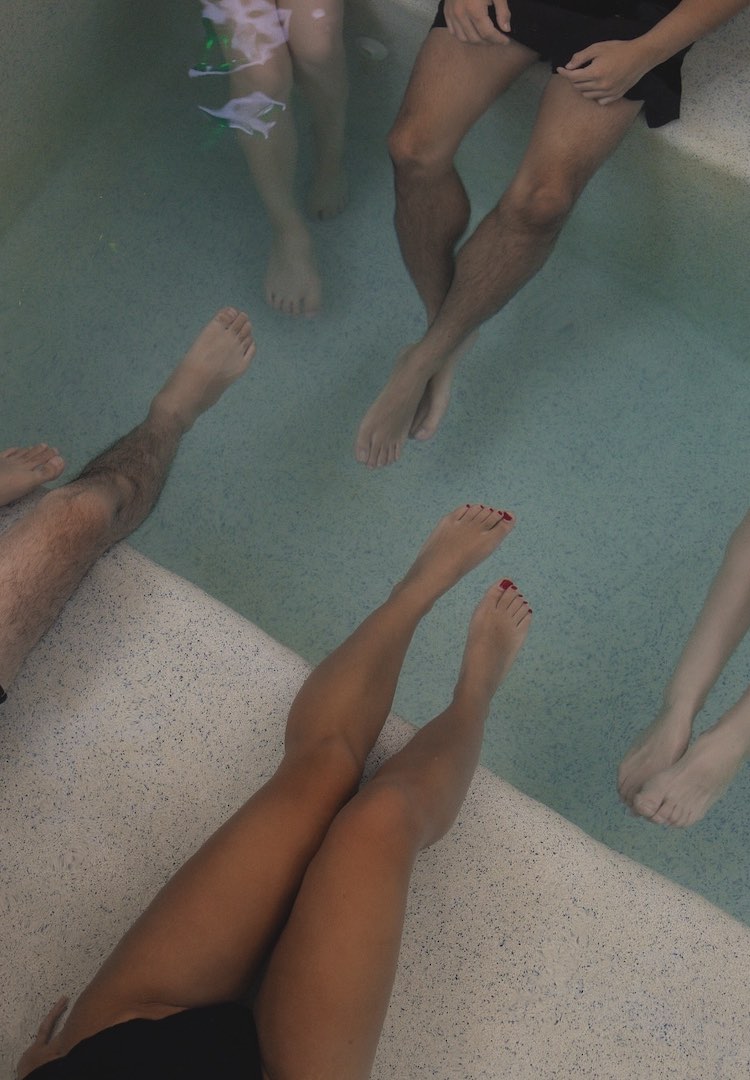Meet the hairdresser petitioning for afro and curly hair styling techniques to be taught in Australian TAFEs
PHOTOGRAPHY BY KRISTINA YENKO
Words by Ella Bazzani-Hockley
“Your whole existence is based around you just fending for yourself, in terms of your hair.”
The recent wave of the Black Lives Matter movement has brought more attention than ever before to the insidious racism BIPOC people face every day.
But in addition to being brutalised, disproportionately incarcerated, systematically discriminated against, as a society, we’ve also had to confront the myriad ways the media, beauty and fashion industries marginalise BIPOC people, through whitewashing, half-assed performative wokeness or by excluding and othering them.
But an industry that hasn’t been as included in these discussions in Australia is hairdressing. Enter Chrissy Zemura, an Australian hairdresser determined to take the current cultural momentum beyond social media.
Last month, Chrissy created a petition, calling for Afro and curly hair styling techniques to be included in the Certificate 3 Hairdressing curriculum in TAFE courses across Australia. To date, the petition has over 17,000 signatures.
Much like the complete absence of Indigenous history in Australian school curriculums, until we include this content in our TAFE courses, Chrissy fears real cultural change isn’t possible.
Since hairdressers are typically not taught how to work with afro or curly hair types, over 1 million First Nations People, Torres Strait Islanders, African or Caribbean Australians are left without adequate hairdressing services and, unfortunately, there are very few hair professionals in Australia who actually know what they’re doing.
A prime example of this is the photos that accompany this article. They are from a shoot Fashion Journal did last year, where the other talent featured had the same hair and makeup artist, and we called in Chrissy specifically to do Moreblessing’s hair because many other hair and makeup artists weren’t equipped with the skills or knowledge to work with her curl type, despite being very well established within the industry.
I spoke to Chrissy about her experiences as both a hairdresser and a client, and why this is about more than hair; it’s about identity and belonging.
Hi Chrissy! You’re a hairdresser, so in your opinion just how ill-equipped are most Aussie hairdressers when it comes to working with afro and curly hair?
Extremely ill-equipped. I’d probably say maybe less than 10 per cent of the hairdressing profession is equipped to deal with texture. And that’s obviously partly their fault, but also just the system that they trained in didn’t equip them, or encourage them [to learn]. It just leaves women, especially women of colour – those on the coil-iest, kinkiest end of the spectrum, and those with Afro hair – with no access to beauty services in the same way a white girl with straight hair does.
So then your whole existence is based around you just fending for yourself, in terms of your hair. And you’re not a professional, so you’re probably doing it wrong, damaging your hair, it’s costly, and people spend a lot of money on these things. The beauty industry feeds off people’s insecurities, so then people who don’t have access to beauty services end up buying a lot of products that aren’t necessarily effective, cause they’re just trying to make their hair easier for them to handle.
How does this further marginalise BIPOC people with afros and curly hair? Do you think they’re ending up spending more money, more time, and feeling more insecure about themselves as a result?
Absolutely, definitely. I’ve done lots on my social media with afro and curly clients about the anxiety they have just trying to get their hair ‘done’. That Sunday night before going back to work, or that Monday morning – what am I doing to my hair? What should I do? Most of them just chuck on a wig, it’s easier. That’s pretty much what pushed me into hairdressing, [was] the fact that nobody could do my hair. Cause I actually started off in makeup, and when I moved here [from London] – I’d always loved the beauty industry and all things to do with beauty – I thought, well, I don’t have access to beauty services [like those in London]. And not just someone who knows how to look after afro hair, but someone who specialises in different types of afro hair.
Also, because there’s not enough curly hair or afro hairdressers here, the ones that are here end up having to do everything. Whereas, you find if you go to an average salon in Surry Hills [Sydney] they have colourists, stylists, people who do specific things; extensions, cuts, and more. We’re not there yet with the curly hair industry. All the curly hairdressers do everything; style, colour, treat, braid, cut. They do everything. Once this [TAFE curriculum change] happens, it will encourage specialising.
What are some of the effects of putting all the afro/curly hair people in a box, as if they’re all the same? Obviously we don’t do that with, like you said, white, straight-haired women.
It’s very different, so I think the best term I can use for everything that’s not straight is ‘texture’. But within texture, you’ve got wavy, curly, coil-y and within that, you’ve got fine, dense, thick, coarse. The fact that it usually gets lumped into one, again, is a huge misunderstanding – we don’t do that with straight, caucasian hair. So I think, once this happens, this will really encourage and enhance understanding around curly and ‘textured’ hair, as well as encourage people to find more information about different types of hair, and hairdressers especially.
Do you think that this is a type of ‘othering’ of BIPOC people? Obviously, we’ve really had to think about this as of late, in light of recent Black Lives Matter events and the traction that has gathered on social media. Why do you think the hairdressing space needs to change before we can really feel that everyone is equal?
Absolutely, the main response I’m getting back from people within the educational space [like TAFE], in hairdressing and beauty, is that ‘there’s not enough people’ [of colour, to justify a curriculum change]. But then why is it that there’s still a huge number of people that are under-serviced? We’re talking about 2 million people [of colour, or that have ‘textured’ hair]. And the fact that the education for hairdressers is only equipping them to do straight hair, I think speaks very clearly to sort of ‘gatekeeping’ of eurocentric beauty standards. What does that say, if all your hairdressers are only equipped to deal with straight hair? This translates into the fashion, the film industry, the beauty industry, where ‘beauty’ is always eurocentric, and this is what people are taught.
And then you’ve got anecdotes and stories on your page from women with afros or curly hair who get their hair done at generic salons, and just end up having their hair straightened. What specific changes to the TAFE curriculums could change this?
Completely. I was trained in the TAFE system, so I know how it works and what they cover. Personally, I’d like to see a change in the practical teaching of how to look after women with textured hair. And also the lazy excuse that I hear often is that we don’t have enough people of colour in this country for TAFE students and teachers to access models. That’s just not true. Go outside – regardless of where you live, texture is everywhere. It’s also not exclusive to just people of colour, so I feel that, even if you might not have ‘all’ forms of texture in one area, you have access to at least one different type of ‘texture’. If you understand cutting curly hair, even if you don’t have access to coil-y hair, or afro, at least you’ve taken steps to learn it. It’s a step. One day you might come across a coil-y client, then you’ll know what to do: it gives you a foundation to build on.
As someone who doesn’t know a lot about the hairdressing course at TAFE, is it still typically straight-haired, caucasian models that you practised on and trained on?
Pretty much. You are responsible for organising your own models, but there is no requirement that they have different textures and different types of hair. I could bring models with all the same hair type, throughout my two years at TAFE, and there’d be no problems. We need different types of hair. And the way it’s assessed, at the moment, is still backwards. Teachers don’t have a lot of time to teach, which is true – they’re showing students [once], and then just focusing on assessment. So what happens is you end up assessing students based on whether or not they are ‘qualified’ to be a hairdresser, but there’s no attention paid to what type of hair they can cut, or how varied their training is.
And, as you said, just because you can cut one type of hair, doesn’t mean you can do it all. So what’s next on the agenda if we want to see more changes around mainstream beauty standards and eurocentric ideals of beauty?
Because of this [petition], lots of makeup artists have come out asking for it to happen in the makeup space as well. Because, again, the hair industry is a kind of cornerstone for so many industries – if we change, lots of change trickles down. It can be a domino effect. Now you have models having better experiences on sets, modelling and movies, hairdressers who will now miss out on certain opportunities if they don’t know how to work with certain types of hair, so it does change things. It’s a domino effect. We’ll see a lot of things changing; Queensland is a hotspot for Hollywood movies at the moment, for example, but all of these people bring their own hairdresser. Kelly Rowland, on The Voice, brings her own hairdresser. That’s crazy.
Do you think a lot of the surface-level change we’ve seen as of late in terms of fashion and beauty brands wanting to be seen as more inclusive, is actually helpful to the type of change hairdressers are trying to generate as well?
Everybody has a responsibility. I think that, instead of doing things to make this a ‘trend’, we should try to make lasting changes, to have lasting effects. So when people say well, why don’t you just go out and train yourself [to work with afro and curly hair]? I’m just one person, and even if I do that, the system stays the same. The system needs to change, it’s not good enough for all the curly hairdressers to do their own separate education, because this doesn’t change anything. It puts the responsibility on people of colour. Hair will really lead the way in this department.
And you have a background in makeup as well. How well do you think the makeup industry is keeping up with hairdressing, in terms of education and change?
Makeup is a little ahead of hairdressing, to be honest. Now, you know, there’s access to [more] products. When I first moved here, there was one store where I could find my shade. Now there’s a lot more. The makeup process is not fully equipped, but they are a step ahead. But with everything that was happening a month ago, I thought I can’t go and speak about the issues within makeup, or journalism, for example, I need to stay in my lane. I’m in the hairdressing industry, I live it, I breathe it, I can criticise it because I know it. And I have solutions for it, and I think more than anything, what I want to do is make lasting change and make a difference in the space that I’m occupying. I know what I’m talking about, and not just because I have afro hair.

